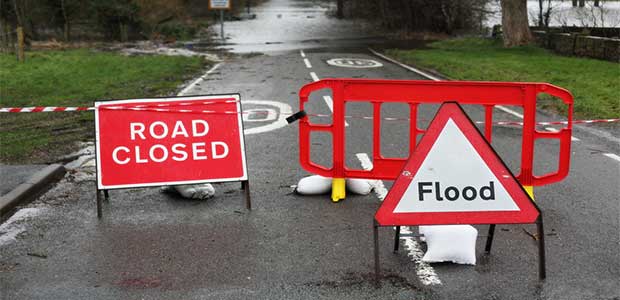
OSHA and NOAA Make Severe Weather Safety Resource
Severe weather can have hazardous effects on all facets of our lives: homes, transportation, and livelihood. OSHA and NOAA are working on a public education effort to help people stay safe during severe weather.
It is not uncommon that the morning news anchor is discussing yet another flooding, tsunami, or tidal surge that tears through neighborhoods and demolishes buildings with no mercy. To help the general public—especially businesses and their workers—stay safe during severe weather, OSHA and the National Oceanic and Atmospheric Administration (NOAA) are working together.
Their severe weather page is designed to help workers, and the public, prepare for floods caused by rain, rising rivers, tidal surges, ice jams, and dam failures. It provides information about hazards, preparedness, response/recovery tips, and OSHA resources.
The Preparedness page provides information on the following: an evacuation plan, emergency supply kits, and flood watches and warnings. Planning information is essential to ensuring a readiness to evacuate in an orderly manner before rising waters impact businesses, residences, or evacuation routes. It is a good idea to find out if your business or residence is in an area that is prone to flooding. If it is, OSHA and NOAA recommend you monitor NOAA Weather Radio or commercial radio television stations for information about flood watches and warnings. A basic Disaster Supplies Kit is a good tool to have on site too, since you never know when you or your company might need emergency supplies.
The Response/Recovery page provides information on the hazards to avoid during flooding. Information covers tips for vehicle use, health hazards such as downed electrical lines, mold, and wild animals. The dangers of severe weather do not just apply during the crisis; many hazards remain during recovery and cleanup. This page provides guidelines that may be applicable to workers involved in assessing and/or cleaning up the damage on their worksite. Read up on road and vehicle guidelines during response/recovery as well, since nearly half of flood fatalities are vehicle-related.
Workers who have to respond to flooded areas face the greatest risk from floods, but all workers can better protect themselves with proper knowledge about flood risks and evacuation plans.
Because employers are responsible for the safety and health of their workers, anticipating hazards associated with flood response and recovery operations is imperative and important. OSHA’s severe weather page with NOAA aims to help employers, workers, and the public to be better prepared in weather crises.